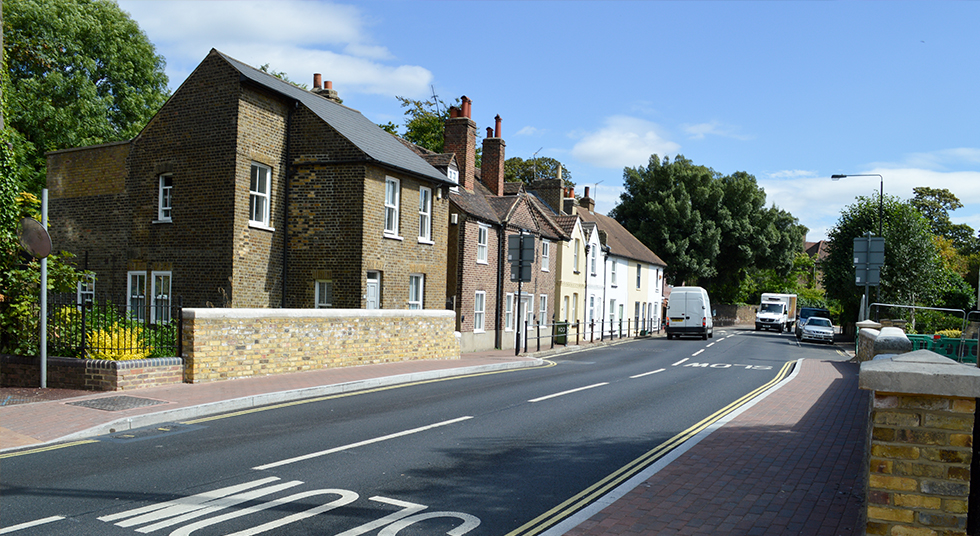Following many years of wear and tear, an assessment survey carried out by the London Borough of Bexley showed that the bridge was steadily weakening and was at risk of becoming unsafe.
As the term maintenance contractor for the borough, FM Conway was commissioned by Bexley Council to carry out a comprehensive upgrade scheme, supported by funding from Transport for London, which would see the existing bridge and parallel footway demolished and rebuilt. Crucially this would allow the overall width of the bridge to be increased from 9.22m to 9.91m, bringing it within safe limits for modern foot and vehicle traffic.
Delivering Innovation
The FM Conway team first implemented a temporary footbridge to the south of the existing bridge to allow continued pedestrian access to Bexley High Street throughout the upgrade works.
Bexley Village Bridge carries a number of services and utilities over the river, including telephone cables, high-voltage electrical cables, medium and low-pressure gas mains and a 750mm high pressure water main that runs alongside the structure. The site team had to take extra care throughout the project to avoid damaging these utilities and to preserve the safety of those working on site.
.jpg)
